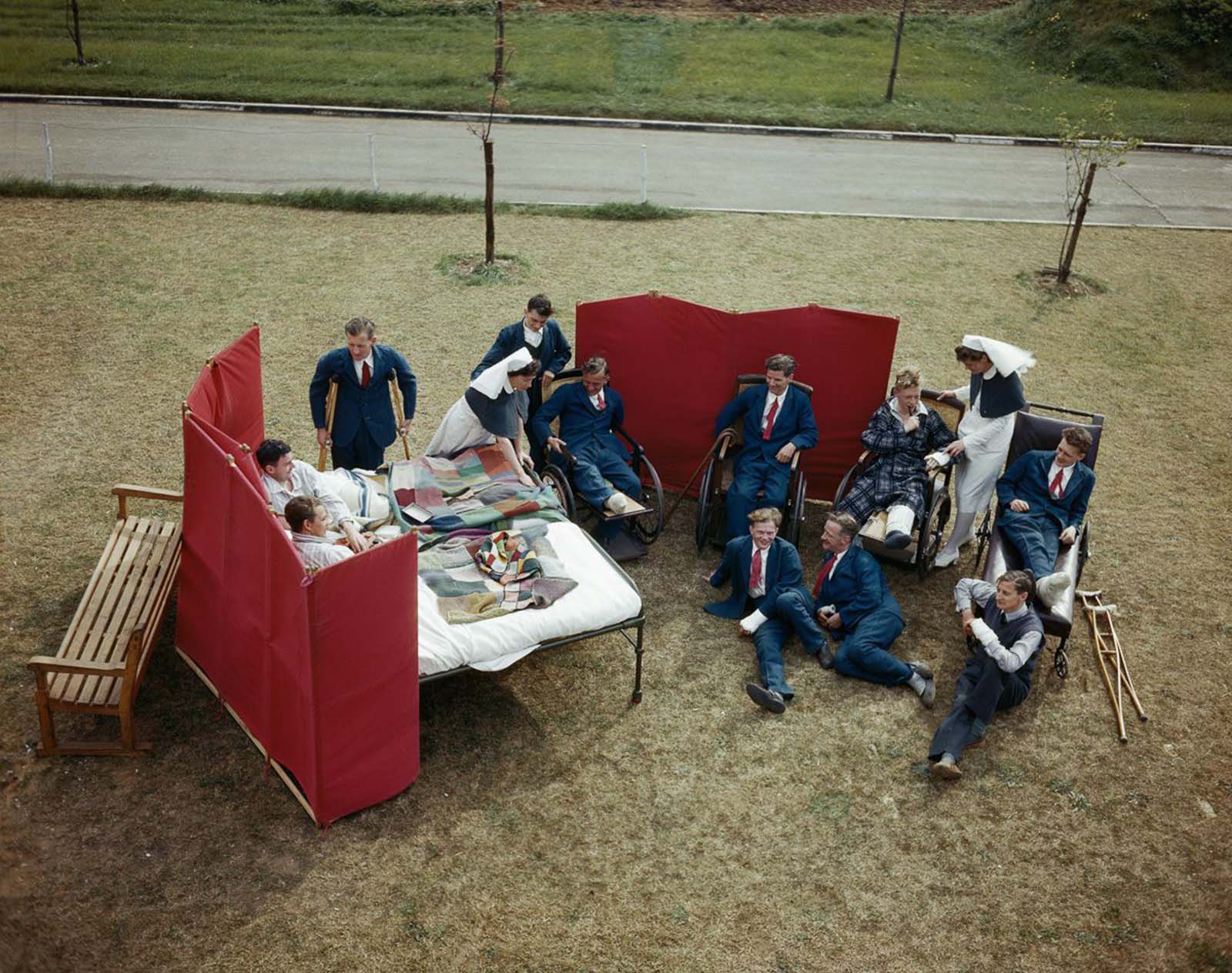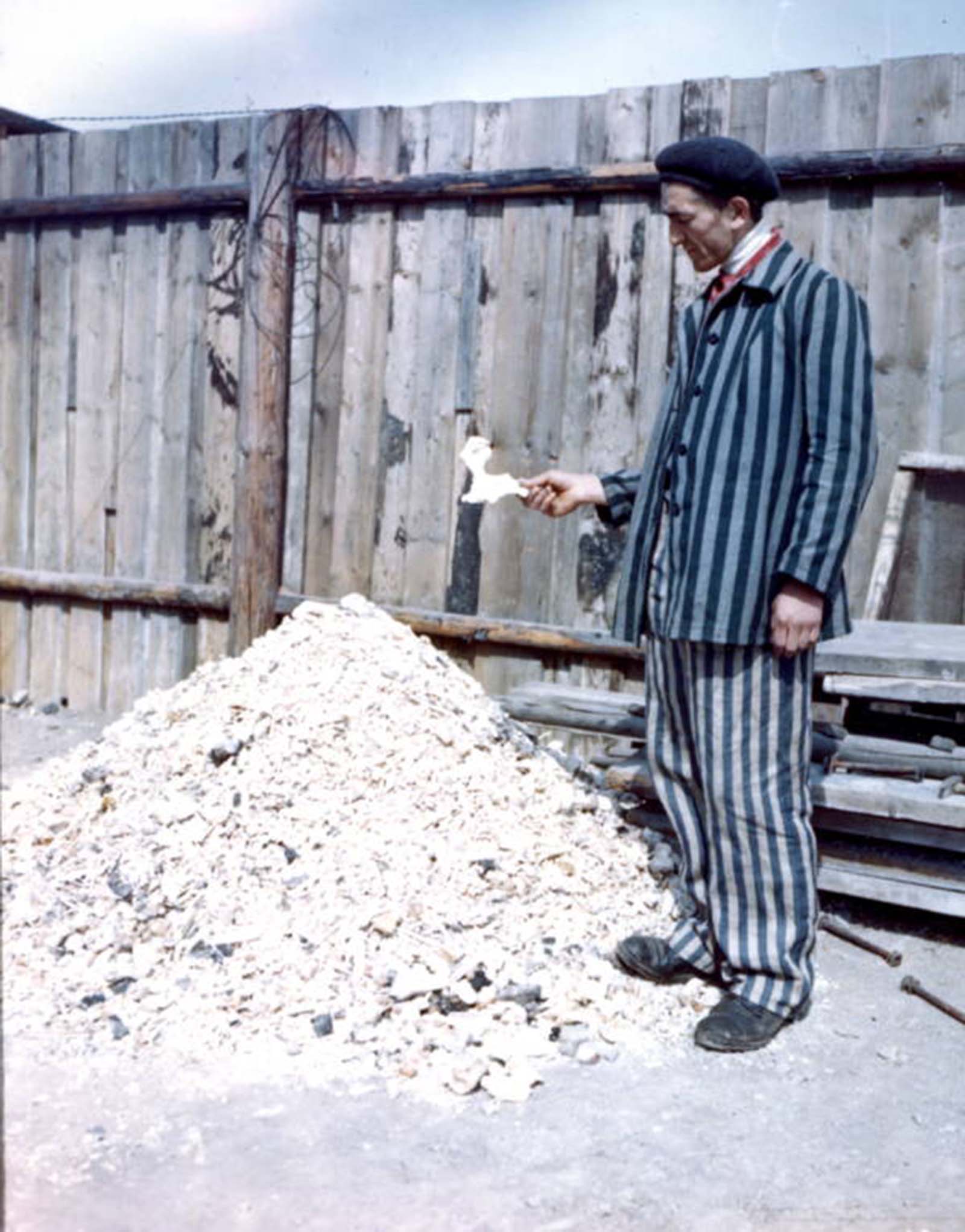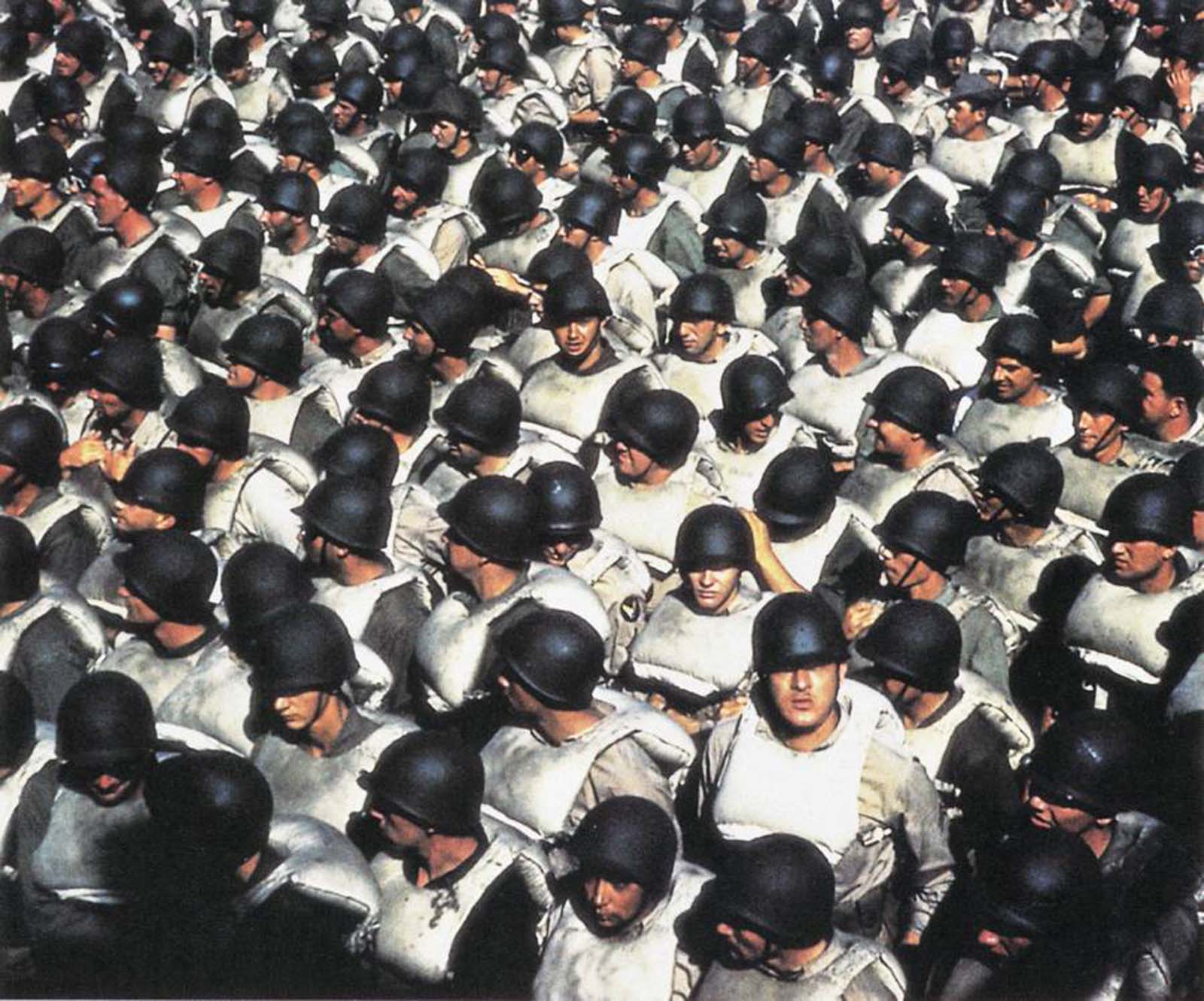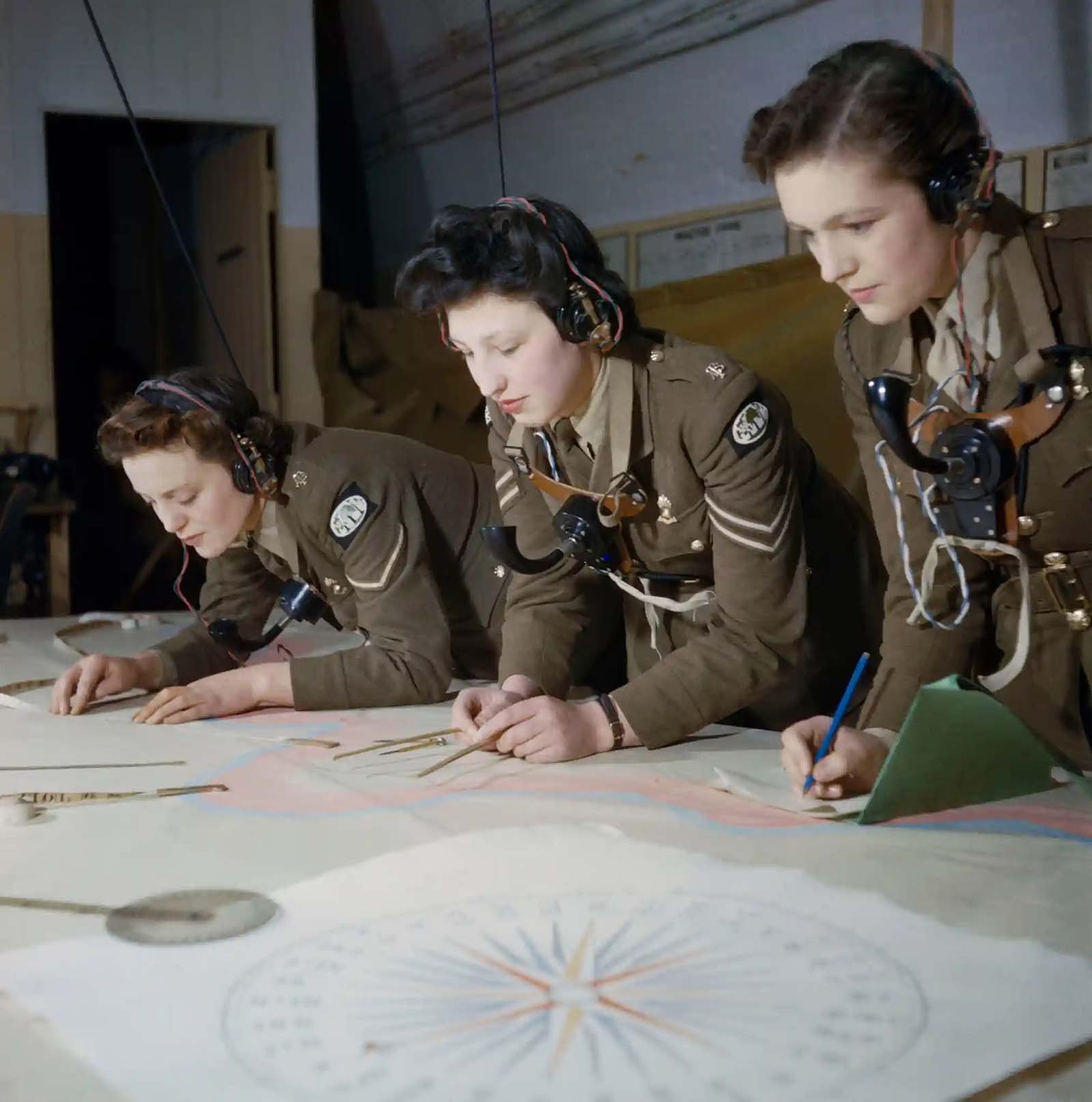
An Auxiliary Territorial Service (ATS) ‘spotter’ at a 3.7-inch anti-aircraft gun site. 1942.
These are rarely seen color pictures from the Second World War featured in the book “The Second World War in Colour” by the Imperial War Museum. Many are being published for the first time and shed light behind the scenes of the conflict.
Color film was quite rare in World War II. The majority of the photos taken during the war were in black and white, and color photography as a whole was still a relatively new technique. It’s this fact that makes these photos so mesmerizing and amazing.
All the pictures are in their original state, not colorized or edited. Colorized photos or footage from World War II have been around for some time, but these images truly show the world as people would have seen it at the time
The images were commissioned by the British Ministry of Information, which got hold of a very small quantity of Kodachrome film. They then decided to use it experimentally, by giving it to some of their official photographers who took it to several locations and employed it very sparingly. Additionally, a few of the pictures were obtained on the Library of Congress collections.
World War II was the deadliest military conflict in history. An estimated total of 70–85 million people perished, or about 3% of the 1940 world population (est. 2.3 billion).

A crew from the 16th/5th Lancers, 6th Armoured Division, clean the gun barrel of their Crusader tank at El Aroussa in Tunisia. 1943.
The Soviet Union lost around 27 million people during the war, including 8.7 million military and 19 million civilian deaths. The largest portion of military dead were 5.7 million ethnic Russians, followed by 1.3 million ethnic Ukrainians.
A quarter of the people in the Soviet Union were wounded or killed. Germany sustained 5.3 million military losses, mostly on the Eastern Front and during the final battles in Germany.
Of the total number of deaths in World War II, approximately 85 percent—mostly Soviet and Chinese—were on the Allied side and 15 percent on the Axis side. Many deaths were caused by war crimes committed by German and Japanese forces in occupied territories.
An estimated 11 to 17 million civilians died either as a direct or as an indirect result of Nazi ideological policies, including the systematic genocide of around 6 million Jews during the Holocaust and an additional 5 to 6 million ethnic Poles and other Slavs (including Ukrainians and Belarusians), Roma, homosexuals, and other ethnic and minority groups.
The mass-bombing of civilian areas, notably the cities of Warsaw, Rotterdam and London, included the aerial targeting of hospitals and fleeing refugees by the German Luftwaffe, along with the bombings of Tokyo and the German cities of Dresden, Hamburg, and Cologne by the Western Allies. These bombings may be considered war crimes. The latter resulted in the destruction of more than 160 cities and the death of more than 600,000 German civilians.

Nurses and convalescent aircrew at Princess Mary’s Royal Air Force Hospital at Halton in Buckinghamshire. 1943.

Private Alfred Campin of the 6th Battalion, Durham Light Infantry during battle training in Britain. 1944.

An Air Raid Precautions (ARP) warden inspects damaged buildings in Holborn, London. 1941.

British paratroopers prepare for a practice jump from an RAF Dakota based at Down Ampney in Wiltshire. 1944.

Field Marshal Sir Bernard Montgomery explains Allied strategy to King George VI in his command caravan in Holland. 1944.

General Dwight D. Eisenhower and his senior commanders at Supreme Allied Headquarters in London. 1944.

Lancaster bombers nearing completion in Avro’s assembly plant at Woodford near Manchester. 1943.

Lieutenant Vernon R Richards of the 361st Fighter Group flies his P-51D Mustang, nicknamed ‘Tika IV’, during a bomber escort mission. 1944.

A 5.5-inch gun crew from 75th (Shropshire Yeomanry) Medium Regiment, Royal Artillery, in action in Italy. 1943.

British soldiers admire the Caryatids on the Acropolis while sightseeing in Athens. 1944.

The RAF’s top-scoring fighter pilot, Wing Commander James ‘Johnnie’ Johnson, with his Spitfire and pet Labrador ‘Sally’ in Normandy. 1944.

Dutch civilians dance in the streets after the liberation of Eindhoven by Allied forces. 1944.

A French sailor and two U.S. Army soldiers looking at the Eiffel Tower after the liberation of Paris. 1944.

A German solider fires a backpack flamethrower across a field of tall grass in the Soviet Union.

Two prisoners of the Buchenwald concentration camp. 1945.

A lathe operator forges parts for transport planes at the Consolidated Aircraft Corporation plant in Fort Worth, Texas. 1942.

A former prisoner holds a human bone from a large pile of other bones from the Buchenwald concentration camp’s crematory. 1945.

Celebration of the liberation of France. 1944.

British Prime Minister Winston Churchill, U.S. President Franklin Roosevelt and Soviet leader Joseph Stalin during the Yalta Conference (Crimea). 1945.

US troops ready for the D-Day. 1944.

US troops in Cologne. 1945.

US Air Force over Germany. 1945.

Actress Marlene Dietrich sits on a piano while troops gather around. Italy. 1945.

A sailor from the US Navy aircraft carrier USS Bennington inscribes a bomb “For Gael!” in memory of a departed shipmate. Pacific, 1945.

Troops and projectiles line the deck of the battleship USS New Mexico. Invasion of Guam, 1944.

American tank crew servicemen at Fort Knox. 1942.

American servicemen watching the Japanese and American officials sign the former’s instrument of surrender. 1945.

An American soldier trains at Fort Knox. 1942.

The German heavy cruiser Admiral Hipper abandoned in dry dock at Kiel, Germany, May 1945.

Auxiliary Territorial Service (ATS) plotters at work at Coastal Artillery Headquarters in Dover, December 1942.

Children aboard a Sherman tank of the 3rd County of London Yeomanry in Sicily, August 1943.

Local workers helping RAF fitters change the engine of a Lockheed Hudson at Yundum in the Gambia, April 1943.

Women producing bullets and cannon shells in an underground munitions factory on the Wirral, Merseyside, 1945.
(Photo credit: Imperial War Museums / Library of Congress / Office of War Information).

No comments
Post a Comment